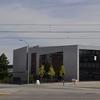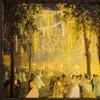The Huntington Launches 'Project Blue Boy'
- SAN MARINO, California
- /
- August 03, 2017
One of the most famous paintings in British and American history, The Blue Boy, made around 1770 by English painter Thomas Gainsborough (1727–1788), will undergo its first major technical examination and conservation treatment. Project Blue Boy begins on Aug. 8, 2017, when the life-size image of a young man in an iconic blue satin costume will go off public view for preliminary conservation analysis until Nov. 1. The Huntington Library, Art Collections, and Botanical Gardens, home to The Blue Boy since its acquisition by founder Henry E. Huntington in 1921, will conduct the conservation project over a two-year period. The final part of the project will largely take place in public view, during a year-long exhibition, also called “Project Blue Boy,” presented from Sept. 2018 to Sept. 2019 in the Thornton Portrait Gallery, where the painting traditionally hangs.
“We are profoundly conscious of our duty of care towards this unique and remarkable treasure,” said Steve Hindle, The Huntington’s Interim President and W.M. Keck Foundation Director of Research. “The Blue Boy has been the most beloved work of art at The Huntington since it opened its doors in 1928. It is with great pride that we launch this thoughtful and painstaking endeavor to study, restore, and preserve Gainsborough’s masterpiece. The fact that we are able to do so while inviting the public to watch and to learn is both gratifying and exciting—not least since the project is so perfectly suited to our mission.”
The Blue Boy requires conservation to address both structural and visual concerns. The painting is so important and popular that it has been on almost constant display since The Huntington opened to the public almost 100 years ago. “The most recent conservation treatments have mainly involved adding new layers of varnish as temporary solutions to keep The Blue Boy on view as much as possible,” said Christina O’Connell, The Huntington’s senior paintings conservator and co-curator of the exhibition. “The original colors now appear hazy and dull, and many of the details are obscured.” According to O’Connell, there are also several areas where the paint is beginning to lift and flake, making the work vulnerable to loss and permanent damage; and the adhesive that binds the canvas to its lining is failing, meaning the painting does not have adequate support for long-term display. These issues and more will be addressed by Project Blue Boy.
In addition to contributing to scholarship in the field of conservation, the undertaking will likely uncover new information of interest to art historians. O’Connell will use a surgical microscope to closely examine the painting. To gather material information, she will employ imaging techniques including digital x-radiography, infrared reflectography, ultraviolet fluorescence, and x-ray fluorescence. The data from these analytical techniques will contribute to a better understanding of the materials Gainsborough procured to create The Blue Boy while at the same time revealing information about earlier conservation treatments.
“One area we’d like to better understand is, what technical means did Gainsborough use to achieve his spectacular visual effects?” said Melinda McCurdy, The Huntington’s associate curator for British art and co-curator of the exhibition. “He was known for his lively brushwork and brilliant, multifaceted color. Did he develop special pigments, create new materials, pioneer new techniques?” She and O’Connell will build upon clues gleaned from previous conservation projects to learn more. “We know from earlier x-rays that The Blue Boy was painted on a used canvas, on which the artist had begun the portrait of a man,” she said. “What might new technologies tell us about this earlier abandoned portrait? Where does this lost painting fit into his career? How does it compare with other portraits from the 1760s?” McCurdy also looks forward to discovering other anomalies that may become visible beneath the surface paint, and what they might indicate about Gainsborough’s painting practice.

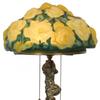

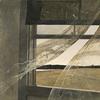
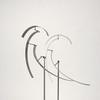




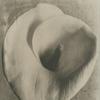

![Offering a Truce [Bested], 1895, is estimated to sell for between $1,300,000 and $1,800,000 on March 22, 2014, for The Russell: An Exhibition and Sale to Benefit the C.M. Russell Museum. Offering a Truce [Bested], 1895, is estimated to sell for between $1,300,000 and $1,800,000 on March 22, 2014, for The Russell: An Exhibition and Sale to Benefit the C.M. Russell Museum.](/images/c/a8/20/Dec10_Offering_a_Truce__Bested_300dpi100x100_c.jpg)

